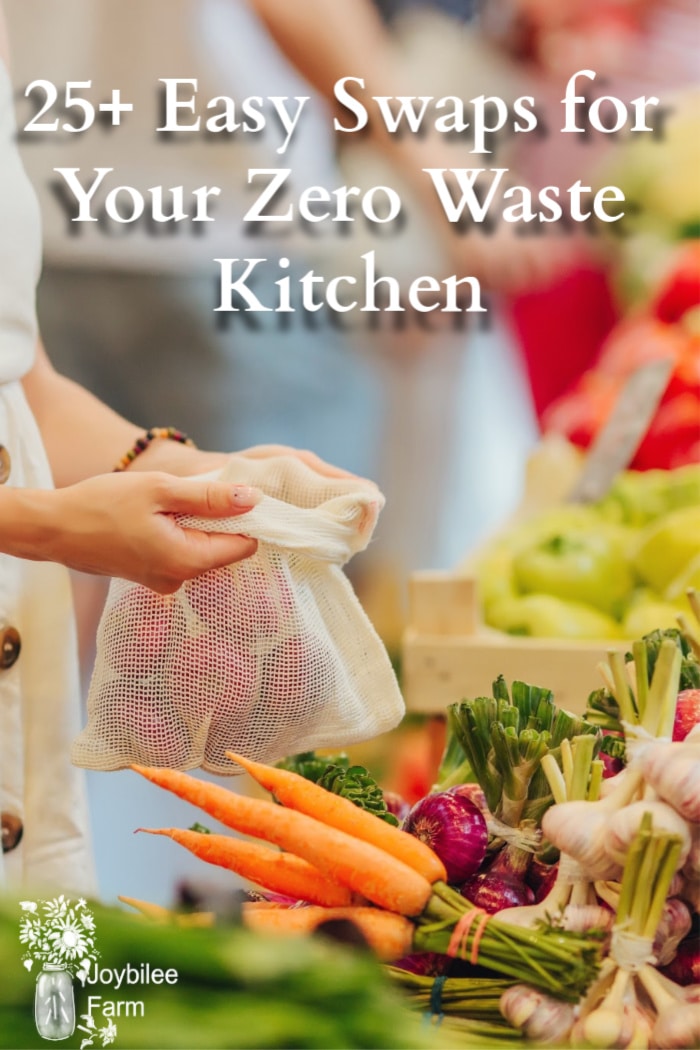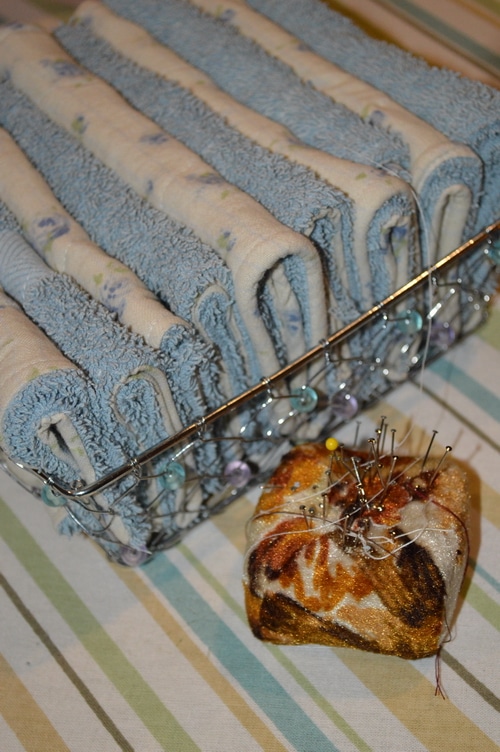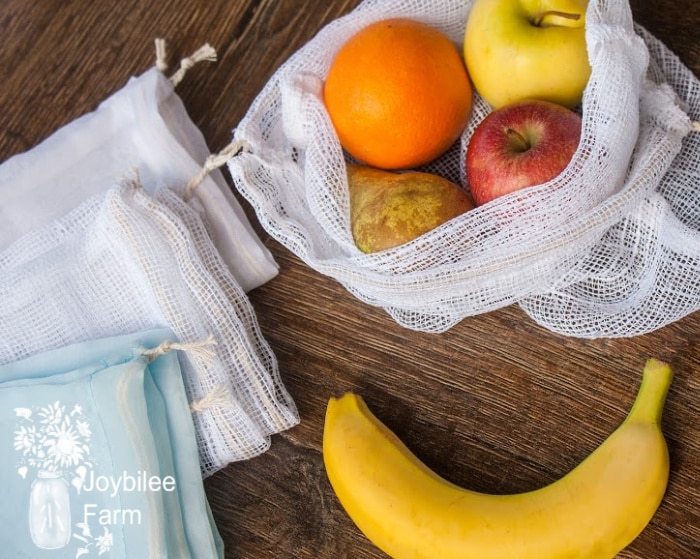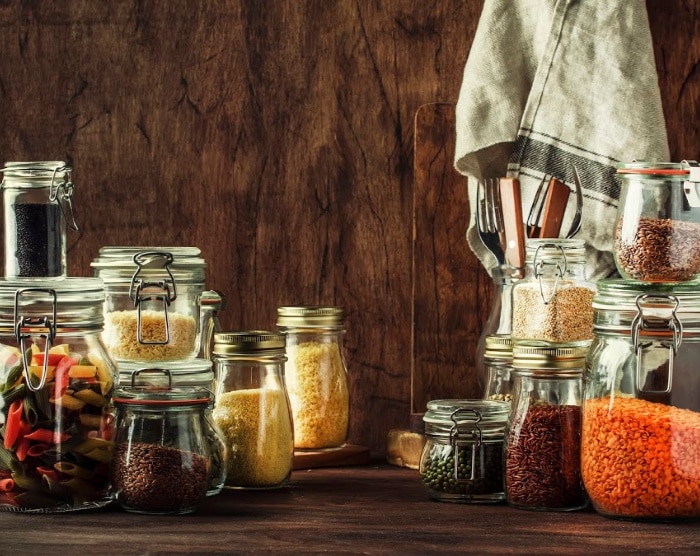Grow your zero waste kitchen easily and within your budget using these easy and practical swaps. By swapping out single-use plastic, paper, and other disposables with these waste-free alternatives you’ll save money, create less garbage, and maybe even be healthier.
Waste is often classified as a first world problem.
Waste comes out of convenience and overabundance. The more food and convenience products you purchase the more food waste you can generate. The first thing to remember is that if you already have a lot of single-use, or reusable plastics, in your kitchen don’t hurry to throw them all out in a big sweeping change. Use what you have, and as you need to replace things you can replace them with products that will contribute to a zero waste kitchen, and lifestyle. The second thing is to use common sense, start with a meal plan, and leftover use plan, and work from there.
Creating a zero waste lifestyle is a great goal. But take it a few small steps, a single new habit, at a time. Reusable bags? Check! Food use plan and shopping list? Check! Switch out the plastic wrap for beeswax wraps? Might take a bit longer. If you already do a lot of these swaps and habits, see if you can add a new one to your arsenal. If you’re new to this, just take one or two to work on, and add more as you make those swaps into habits.

Use wise shopping principles for a zero waste kitchen
- Shop wisely – don’t bring home more than you will eat before it spoils. I’m a fan of the pantry method of menu planning, and this tip fits right in. For it to work for you, you need to assess what needs to be used up quickly and what you have on hand in staples and work it into your menu plans in the next couple of days. Plan leftovers to fit into the next day’s meals. For example, if you make a chicken on Sunday, use the leftover to make lunch on Monday, and the carcass to make some soup stock than can be used on Monday night, or frozen for a later meal.
- Replaced canned beans with dry beans that you purchase in bulk. Evaluate other canned goods that you can make yourself, like diced tomatoes and pasta sauce. Using mason jars in canning will help you create a zero waste kitchen as Mason jars can be used for food storage, as beverage containers, or for food preservation.
- Buy in bulk and skip plastic packaging. Use small pre-weighed paper, or fabric bags for your bulk foods purchases. Write the bin number on a tag or label on the bag. The cashier can adjust the scale to tar with your recorded empty bag weight.
- Replace the easy-to-grab plastic produce bags with mesh fabric produce bags. You can make them yourself from up-cycled sheer curtains, or other sheer fabrics. Alternatively, you can find them for sale. Remember to have a note of the bag’s weight, so you don’t pay extra for being green. If you buy produce at the farmer’s market, instead of the store, it’s easier to use your own bags and you cut out the environmental cost of out-of-season food transporting.
- With most grocery stores now charging for plastic bags, it makes more sense than ever to have reusable bags on hand. You can make your own grocery bags, find them at thrift stores, or buy bags or bins at your local store. An insulated freezer bag is also a good investment, it will keep your frozen items solid till you get home, reducing food waste. I picked up a couple at Costco for just a few dollars.
Swap fabric for paper and plastic in the kitchen
- Instead of paper napkins use linen or cotton napkins. I prefer linen due to its durability, but either natural fiber works. Avoid polyester napkins as grease, and other stains, will not come out of them. When the napkins get too worn for table use, move them to the rag bag for cleaning. Linen rags do a great job of cleaning glass, without lint or streaks. Further, linen and cotton napkins can be retired to the compost pile when they are too worn to be used as napkins, or cleaning rags. Save your most worn rags for cleaning grease, buffing cast iron, and stove cleaning. Then, compost or burn as a fire starter to get the most out of them for your zero waste kitchen.
- Up-cycle linen table cloths into bread bags, to store your homemade loaves of bread and buns, or bakery purchased bread and buns. Or use a linen table cloth on your picnics, instead of a plastic table cloth. Linen works well when turned into bulk food bags, and since is it naturally anti-fungal and anti-bacterial, it can help keep your food fresh longer than plastic.
- Replace your paper towels with homemade un-paper towels, just up-cycle some old fabrics into your new un-paper towels. Once used to wipe up a spill, or the counter, you can throw them in the wash and reuse them. When they get too worn to reuse, set them aside for cleaning up the worst messes, like vomit or grease, and discard afterward. If you don’t have time to sew your own, you can buy bamboo reusable towels.
- With young kids, or pets in the house, you may want a stock of throw-away un-paper towels. Use worn-out fabric, like that from a well-used bed sheet, or old threadbare cotton pajamas, to make them. These fabrics have good absorbing qualities, but no thread strength left for other forms of up-cycling. Cut squares with pinking shears to prevent fraying, and store in a basket to wait for the messes that you don’t want to wash out in your washing machine. Use this type of un-paper towels for vomit, grease, cast iron clean up, blood, paint, vehicle maintenance, and other overly messy and greasy situations. You may want to throw these messes in the garbage along with the cleanup cloths.
- To replace plastic wrap for covering larger bowls and platters, make a beeswax wrap. Use beeswax wraps for your on-the-go snacks and sandwiches, instead of plastic reusable containers or single-use plastic bags. Simply wrap your foods the night before and you’ll be ready to go in the morning. Beeswax wraps can be hand washed with dish soap and warm water, never wash in the washer or with too hot water or the wax can be weakened. If the wrap becomes too worn to use, it can be composted if it was made with cotton or linen fabric.
- Replace your plastic, bulk produced scrubbing sponge with a knit or crochet handmade washcloth. These are simple to make, from 100% cotton yarn, and work just as well as their plastic sponge counterparts. If you still prefer a sponge, over a cloth, buy natural walnut sponges or loofah sponges that can be safely composted when they are too worn to use any longer.
- One swap you might not think of for your zero waste kitchen is switching from tea bags to loose leaf tea. Teabags, even the so-called “silk” ones, contain plastic and release microplastics into our drinks. Reduce and eliminate this plastic, and all the packaging waste, by using loose leaf tea. Some tea companies let you get a refillable stainless steel tin for your tea, cutting out the use of a plastic bulk bag. If you make your loose leaf tea in a stainless steel tea ball, a french press, or a teapot with a strainer, you eliminate the waste of the teabag and packaging, as well as cutting down on ingested plastic. Harvesting your own herbs for tea, storing them in reusable containers, and steeping them with a tea ball, can eliminate all packaging waste.
Reuse and compost food waste scraps
- No matter what you do, there will be scraps and stuff coming out of the kitchen. Make composting part of your zero waste kitchen. Composting is re-purposing non-edible food scraps, not wasting them. If you have a green-bin, you should have a list of what your city waste management accepts as compost-able matter. The city accepted list may have things on it like pet waste, grease, and meat scraps, that you do NOT want to put in your home compost pile for use in your own garden.
- If you want to get even more use from your non-edible kitchen scraps, use them for natural dyeing your up-cycled linens before you turn them into produce and grocery bags. Things like avocado peels and pits, onion skins, and coffee grounds can all be used as natural dyes. After extracting the color, the spent plant matter can still be composted.
- Combine the use of a pantry and menu planning to cut down on leftovers by using them for another meal. One of the easiest ways to reuse leftovers is to assemble them into a casserole, or soup, as you are cleaning up from the meal. A crockpot of soup can last a few lunches, and a casserole can be a quick dinner for the next night.
- Do batch cooking and freeze meals instead of buying pre-made frozen meals. Use jars, reusable containers, or glass containers with snap lids to freeze meals, and leftovers. Make sure you write down what is in your freezer, so you don’t forget and can use what’s already available for meal planning the next week. Not only does it help you create a zero waste kitchen, but it also helps with your budget and your health goals!
- Purchase local fruits and vegetables instead of trucked in ones. However, if most of your vegetables and fruit come fresh from your garden, or the farmer’s market they won’t be coated in preservatives and you will need to preserve them. You can dehydrate them to preserve your seasonal abundance, store dehydrated food in glass jars or reusable containers, and use it in the winter. You can also dehydrate seed-free bread scraps for croutons and bread crumbs, and store them indefinitely in glass jars. If you dehydrate seeded pieces of bread they can go rancid in storage, so only dehydrate seed containing bread if you can use it within the month.
- Buy vegetables, like celery, green onions, and romaine lettuce, with the base still attached, instead of in a “ready to eat” package. You can regrow a smaller version of the plant from its base. Simply place the base in water, until it begins to sprout and root, and then plant in a small pot. After a few weeks, you can have a fresh, homegrown, version of the plant in addition to the one you originally purchased. You can also encourage carrot tops to root if they’ve been in cold storage, so you can have fresh carrot greens for soups and stews. Carrot greens taste like a stronger version of celery.
- For long term storage, you can reuse glass jars for pantry storage, canning, and even freezing. If you use essential oils, you can reuse those containers for home infused oils. Glass jars and containers have an infinite number of options for reuse until they break. Broken, clear glass, food jars can still be recycled.
Plan ahead for zero waste convenience
- Planning with the goal of a zero waste kitchen can help us reduce the temptation to chose convenience over our own health. For example, make mixes of the items you use frequently, and store them in glass until you need them, instead of buying overpriced and over-packaged convenience items. This includes soup mixes, hot chocolate, pancake mix, chai tea, biscuit mix, and even cake and cookie mixes. When you have your own pre-made mix, you can measure out how much you need for your project and be good to go. When you empty the jar of the mix, mix up another batch in the same jar, and enjoy having zero waste convenience.
- Another example of this principle is an Artisan Bread, where you make a refrigerator bread dough to use as needed for fresh bread. This is instead of buying plastic-packaged bread at the grocery store, or even paper-wrapped bread at a baker’s.
- Buy quality kitchen items that will last, instead of the cheapest option. This may not seem like normal advice for a zero waste kitchen. But, it is a good plan for the environment and your pocketbook. I have seen inexpensive plastic kitchen utensils that broke within three or four months of purchase, and quality stainless steel utensils that have lasted 25 years of constant use. Quality utensils will pay for themselves. Choose quality over convenience, and don’t be afraid to invest in a few high-quality kitchen items, like a cast-iron frying pan and stainless steel utensils. Over 20 years, it can save you buying multiple non-stick frying pans and plastic spatulas, that also add toxins to your food.
- Make yogurt, pickles, condiments, jams, and jellies at home, and store them in glass, instead of buying their plastic packaged counterparts. Again, this takes forethought and planning, but you can reduce or eliminate bringing home plastic waste by making these things at home. Even mayonnaise and mustard can be made at home.
- Switch to a personal glass or aluminum straw instead of plastic straws. These types of straws can be reused multiple times, and as long as you don’t drop the glass straws they can be reused indefinitely. Many places are switching to “environmentally friendly” straws made from paper, wheatgrass, and other items. If you have an allergy to, say, wheat you may want to bring your own straws to restaurants and ask for “no straw” with your drink. Or, just drink from a glass or mug and skip straws altogether.
- Buy your eggs from the farmer instead of the store, and reuse the egg cartons multiple times. Or, raise your own chickens and reuse cardboard and Styrofoam cartons multiple times. Chickens eat food scraps, and produce eggs but are a lot of work. Eventually, you will have to recycle the worn-out egg carton, but it will have had a long and useful life. Broken cardboard egg cartons can also be used for fire-starter.
- This one might be self-evident, but if you use a Keurig K-Cup or other single pod, instant brewing coffee maker use a reusable filter cup like this one. Or swap the fancy electric Keurig coffee machine for a Moka pot or French Press. Brewing coffee in a plastic pod adds microplastics into your drink. A mocha pot takes less than ten minutes to brew, and you’ll have fresh espresso and plastic-free coffee grounds for your compost. Drip coffee makers have the challenge of a paper filter, which the French press and Moka pots don’t. Also, the convenience may seem reasonable at 0.50 to 0.75 cents a cup, however, a pod contains approximately 10-15 grams of coffee which works out to 25+ dollars per pound of coffee. Normally a pound of ground coffee costs about 8 dollars, for specialty blends and up to 10 dollars for organic.
Your Turn:
What else would you add to my list? Share your ideas in the comments.






I enjoyed this article but have one comment about chickens…they are not a lot of work. I maybe spend 15 minutes a day on feeding, watering and cleaning the coop. For what they provide to the homestead, I’d say that was a good investment of time.